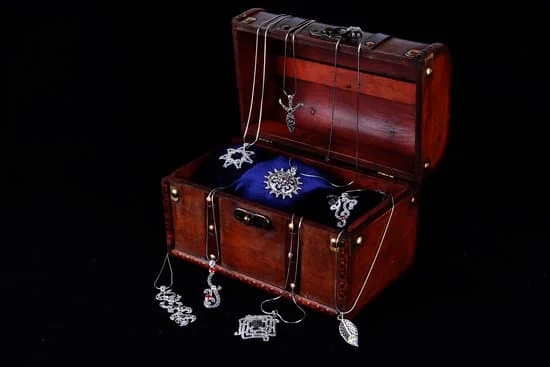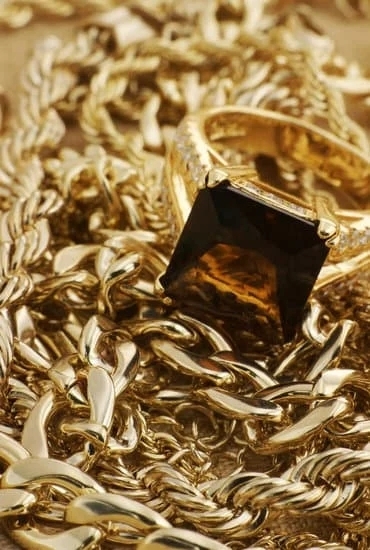The history of Native American jewelry is a rich tapestry of tradition, craftsmanship, and cultural significance. From ancient roots to contemporary reinterpretations, Native American jewelry has played a vital role in the expression of indigenous identity and heritage. Books have been instrumental in preserving and understanding this history, providing valuable insights into the origins, techniques, symbolism, and evolution of Native American jewelry.
The art of jewelry making has ancient roots in Native American culture, having been practiced for centuries as a form of personal adornment and cultural expression. The intricate designs and materials used hold deep significance within tribal traditions, reflecting the values and beliefs of indigenous communities. Understanding the historical context and traditional techniques of Native American jewelry making contributes to a greater appreciation for its cultural importance.
Books serve as invaluable resources in documenting and delving into the traditional methods and materials used in Native American jewelry making. They highlight the exceptional craftsmanship and artistry of indigenous jewelry makers, providing a platform for their stories to be shared with a wider audience. The preservation efforts through literature are crucial in ensuring that the legacy of Native American jewelry continues to be recognized and celebrated.
Ancient Roots
The ancient roots of Native American jewelry making date back thousands of years, with evidence of adornment and ornamentation found in archaeological sites across North and South America. The practice of crafting jewelry holds deep cultural and spiritual significance within Native American traditions, serving as a form of artistic expression, storytelling, and ritual. From intricate beadwork to distinctive metalwork, the diversity of Native American jewelry reflects the richness and complexity of indigenous cultures.
Traditional Native American jewelry techniques vary among different tribes, with each community showcasing unique styles, materials, and designs. For example, Navajo silversmithing is renowned for its use of turquoise and intricate silver stamp work, while Zuni artisans are known for their intricate stone inlay work and precise lapidary skills. These traditional methods have been passed down through generations, preserving important techniques that embody the heritage and craftsmanship of indigenous jewelry makers.
By examining the ancient roots of Native American jewelry making, we gain valuable insights into the cultural importance and symbolism behind these art forms. Jewelry serves as a powerful link to ancestral traditions and beliefs, with each piece conveying stories of identity, spirituality, and connection to the natural world. Understanding the ancient origins of Native American jewelry provides a deeper appreciation for the artistry and cultural significance embedded in these timeless creations.
Ancient Roots: Delving into the origins of Native American jewelry making allows us to appreciate the depth of historical knowledge passed down through generations. By exploring traditional techniques and understanding the symbolism behind these art forms, we can gain a deeper appreciation for this rich cultural heritage. Through books dedicated to the history of Native American jewelry, readers can discover the ancient roots that continue to inspire contemporary interpretations today.
Traditional Techniques
Native American jewelry making has a rich and diverse history that dates back centuries. The techniques and materials used by indigenous jewelry makers have been passed down through generations, preserving traditional craftsmanship and artistry. From intricate beadwork to intricate silverwork, each piece of Native American jewelry is a unique reflection of the culture and traditions of its creators.
Delving Into Traditional Methods
The traditional methods of Native American jewelry making vary among different tribes, with each community having its own distinct style and techniques. For example, the Navajo people are renowned for their exquisite silverwork, while the Pueblo tribes are known for their intricate stone inlay designs. Understanding these traditional methods is essential in appreciating the cultural significance and craftsmanship behind each piece of Native American jewelry.
Highlighting Craftsmanship and Artistry
The craftsmanship and artistry of indigenous jewelry makers can be seen in every intricate detail of their creations. From hand-carved stones to meticulously crafted silver pieces, traditional Native American jewelry showcases a level of skill and precision that has been honed over centuries. These techniques not only produce stunning pieces of wearable art but also serve as a testament to the resilience and creativity of Native American artisans throughout history.
As interest in traditional Native American jewelry continues to grow, it is important to recognize the importance of books in preserving and understanding the techniques and artistry involved in this ancient craft. Through literature, enthusiasts can gain insight into the traditional methods and materials used by indigenous jewelry makers, ensuring that this rich cultural heritage is preserved for future generations to appreciate.
Evolution of Native American Jewelry
Native American jewelry has a rich and diverse history that dates back centuries. The evolution of Native American jewelry is a fascinating journey that reflects the cultural, social, and economic changes experienced by indigenous communities over time.
One of the key aspects of the evolution of Native American jewelry is the influence of trade and contact with other cultures. With the arrival of European settlers, Native American jewelry styles began to incorporate new materials such as silver and turquoise, reflecting the changing dynamics of indigenous communities. Traditional designs were adapted and transformed, giving rise to unique fusion styles that combined elements of both Native American and European jewelry-making techniques.
Books on the history of Native American jewelry provide valuable insights into these evolutionary processes, offering detailed accounts of how different cultural influences shaped the development of indigenous jewelry styles. Authors and researchers have meticulously documented this evolution, shedding light on the complex interactions between Native American communities and external forces throughout history.
| Evolutionary Process | Cultural Influences |
|---|---|
| Incorporation of silver and turquoise | European Settlers |
| Adaptation and fusion styles | Native American-Europe contact |
Symbolism and Meaning
Native American jewelry has long been a powerful form of expression, with each piece carrying deep symbolism and meaning. From intricately designed silver and turquoise pieces to vibrant beadwork, every element of Native American jewelry holds significance within the cultural and spiritual context of indigenous communities.
Spiritual Significance
Jewelry in Native American culture is often imbued with spiritual significance, representing connections to the natural world, ancestral spirits, and traditional beliefs. For example, the use of turquoise in jewelry holds great importance for many Native American tribes, symbolizing protection, healing, and the presence of the divine. Similarly, specific animal motifs and symbols are used to convey messages related to spirituality and connection with the natural world.
Cultural Identity
In addition to its spiritual symbolism, Native American jewelry also serves as a powerful representation of cultural identity. Different tribal communities have distinct styles and motifs that reflect their unique heritage and traditions. The designs and materials used in jewelry making are deeply rooted in the history and cultural practices of each tribe, serving as a visual expression of their identity.
Passing Down Traditions
Through intricate designs and symbolic meanings, Native American jewelry also plays a crucial role in passing down traditions from one generation to another. As artisans create new pieces using traditional techniques and symbols, they preserve ancient knowledge and teachings that have been handed down through centuries. Books documenting these traditions serve as vital resources for understanding the rich symbolism behind Native American jewelry designs.
As individuals explore the history of Native American jewelry through books and other resources, they gain a deeper appreciation for the cultural significance embedded in these beautiful pieces. Through understanding the symbolism and meaning behind each design, readers can develop a greater respect for the traditions preserved within indigenous jewelry making.
Preservation Efforts
The history of Native American jewelry is a rich and intricate tapestry woven with cultural significance and artistic expression. Books play a crucial role in preserving and understanding this history, serving as valuable resources for scholars, collectors, and enthusiasts alike.
Key publications such as “Native American Jewelry: A Cultural History” by Stacy B. Hopwood and “Southwestern Indian Jewelry” by Dexter Cirillo offer comprehensive insights into the ancient roots, traditional techniques, evolution, symbolism, and meaning of Native American jewelry. These books provide in-depth explorations of the craftsmanship, materials, and cultural significance behind each exquisite piece.
In addition to exploring the historical and cultural aspects of Native American jewelry making, these books also shed light on the preservation efforts being made to safeguard this traditional craft. They document the unique techniques and materials used by indigenous jewelry makers throughout history, ensuring that their artistry and traditions are not lost to time.
As interest in Native American jewelry continues to grow, there is an increasing need for literature that accurately reflects its history and significance. By investing in well-researched books on the subject, readers can contribute to the ongoing preservation of this important cultural heritage.
Recommended Books on Native American Jewelry:
- “Native American Jewelry: A Cultural History” by Stacy B. Hopwood
- “Southwestern Indian Jewelry” by Dexter Cirillo
- “Indian Silver Jewelry of the Southwest 1868-1930” by Larry Frank
- “Navajo & Pueblo Silversmiths” by John Adair
Contemporary Native American Jewelry
From intricate silverwork to vibrant gemstone creations, contemporary Native American jewelry reflects the creativity and talent of indigenous artisans. Many artists draw inspiration from their cultural heritage, incorporating traditional symbols and motifs into their designs while also experimenting with new materials and techniques. This blending of old and new creates pieces that not only honor the traditions of the past but also speak to the evolving identity of Native American artistry in the modern age.
The impact of contemporary Native American jewelry has not only been felt within artistic circles but also in the broader fashion and design industries. Many talented designers have collaborated with indigenous artisans to create stunning collections that celebrate Native American culture while also bringing attention to important social and environmental issues. As a result, contemporary Native American jewelry has become an important cultural export, allowing for greater visibility and appreciation of indigenous traditions on a global scale.
As interest in contemporary Native American jewelry continues to grow, more books and resources are becoming available to provide in-depth insights into this evolving art form. These publications not only showcase stunning photography of contemporary pieces but also delve into the stories and inspirations behind each creation. By exploring these resources, readers can gain a deeper understanding of how contemporary Native American jewelry is shaping the cultural landscape while honoring its enduring legacy.
Resources for Further Exploration
In conclusion, the history of Native American jewelry is a rich and diverse tapestry that reflects the culture and traditions of indigenous peoples. Through ancient roots and traditional techniques, Native American jewelry has evolved over time, influenced by trade and contact with other cultures. The symbolism and meaning behind these jewelry designs provide insight into the deeper cultural significance of each piece.
As we continue to appreciate and preserve the history of Native American jewelry, books play a crucial role in documenting and understanding this art form. They provide valuable insights into the techniques, symbolism, and evolution of indigenous jewelry making. Through these resources, readers can delve deeper into the preservation efforts that are essential for maintaining this important aspect of Native American heritage.
For those who wish to further explore the captivating world of Native American jewelry, there are a wealth of resources available. A list of recommended books and materials can offer in-depth knowledge about the history, symbolism, and craftsmanship behind these stunning pieces. By engaging in further reading and research, individuals can gain a deeper appreciation for the intricate beauty and cultural significance of Native American jewelry.
Frequently Asked Questions
What Is the Oldest Native American Jewelry?
The oldest Native American jewelry dates back to pre-Columbian times, with evidence of intricate beaded and shell jewelry found in archaeological sites. These artifacts provide a glimpse into the rich history and craftsmanship of indigenous peoples.
Is It OK to Wear Native American Jewelry?
It is acceptable to wear Native American jewelry as long as it is done so respectfully and without appropriating or disrespecting the culture. It’s important to learn about the significance of the pieces and support authentic Native artists and craftsmen.
What Native American Tribes Are Known for Jewelry?
Various Native American tribes are known for their distinctive styles of jewelry-making. For example, the Navajo are famous for their silverwork and turquoise pieces, while the Zuni are renowned for their intricate stone inlay work. Each tribe has its own unique traditions and materials used in creating jewelry.

Welcome to my jewelry blog! My name is Sarah and I am the owner of this blog.
I love making jewelry and sharing my creations with others.
So whether you’re someone who loves wearing jewelry yourself or simply enjoys learning about it, be sure to check out my blog for insightful posts on everything related to this exciting topic!





